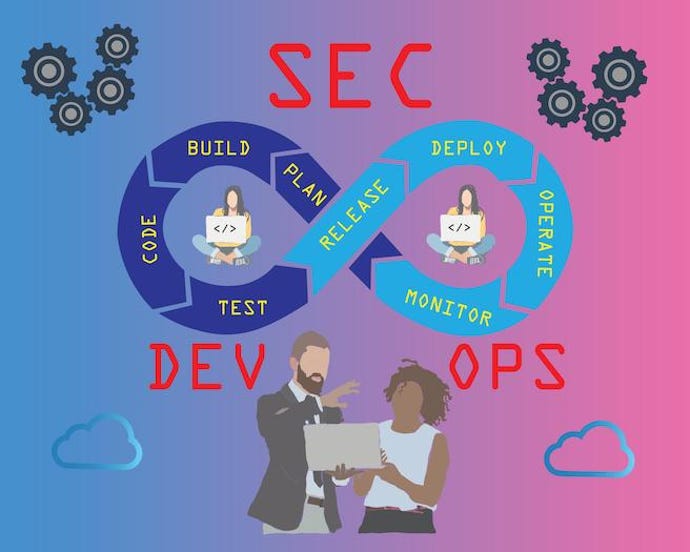A New Quantum Computing Method Is 2,500 Percent More Efficient

Today, most quantum computers can only handle the simplest and shortest
algorithms, since they're so wildly error-prone. And in recent algorithmic
benchmarking experiments executed by the U.S. Quantum Economic Development
Consortium, the errors observed in hardware systems during tests were so serious
that the computers gave outputs statistically indiscernible from random chance.
That's not something you want from your computer. But by employing specialized
software to alter the building blocks of quantum algorithms, which are called
"quantum logic gates," the company Q-CTRL discovered a way to reduce the
computational errors by an unprecedented level, according to the release. The
new results were obtained via several IBM quantum computers, and they also
showed that the new quantum logic gates were more than 400 times more efficient
in stopping computational errors than any methods seen before. It's difficult to
overstate how much this simplifies the procedure for users to experience vastly
improved performance on quantum devices.
Design Patterns for Machine Learning Pipelines
Design patterns for ML pipelines have evolved several times in the past decade.
These changes are usually driven by imbalances between memory and CPU
performance. They are also distinct from traditional data processing pipelines
(something like map reduce) as they need to support the execution of
long-running, stateful tasks associated with deep learning. As growth in dataset
sizes outpace memory availability, we have seen more ETL pipelines designed with
distributed training and distributed storage as first-class principles. Not only
can these pipelines train models in a parallel fashion using multiple
accelerators, but they can also replace traditional distributed file systems
with cloud object stores. Along with our partners from the AI Infrastructure
Alliance, we at Activeloop are actively building tools to help researchers train
arbitrarily large models over arbitrarily large datasets, like the open-source
dataset format for AI, for instance. ... Even though the problem of transfer
speed remained, this design pattern is widely considered as the most feasible
technique for working with petascale datasets.
Daily Standup Meetings are useless

Standup are not about technical details, even though some technical context can
help to frame the arisen complexity and allow PjM and Leads to take the
necessary steps to enable you achiving your tasks ( additional meetings,
extending the deadline, reestimating the task within the sprint, set up pair
programming sessions etc). According to the official docs the Daily Scrum is a
15-minute event for the Developers of the Scrum Team. The purpose of the Daily
Scrum is to inspect progress toward the Sprint Goal and produce an actionable
plan for the next day of work. This creates focus and improves self-management.
Daily Scrums improve communications, identify impediments, promote quick
decision-making, and consequently eliminate the need for other meetings.
Honestly I am not so sure about the last point, due to the short time allocated
to it, it can indeed generate other meetings, follow-ups between Tech Lead and
(some of ) the developers, or between the team and the stakeholders, or among
developers which decide to tackle an issue with pair programming.
When Is the Waterfall Methodology Better Than Agile?
Is waterfall ever better? The short answer is yes. Waterfall is more efficient,
more streamlined, and faster when it comes to specific types of projects like
these: Generally speaking, the smaller the project, the better suited it is
to waterfall development. If you’re only working with a few hundred lines of
code or if the scope of the project is limited, there’s no reason to take the
continuous phased approach; Low priority projects – those with minimal impact –
don’t need much outside attention or group coordination. They can easily be
planned and knocked out with a waterfall methodology; One of the best
advantages of agile development is that your clients get to be an active part of
the development process. But if you don’t have any clients, that advantage
disappears. If you’re working internally, there are fewer voices and opinions to
worry about – which means waterfall might be a better fit; Similarly, if
the project has few stakeholders, waterfall can work better than agile. If
you’re working with a council of managers or an entire team of decision makers,
agile is almost a prerequisite.
To Secure DevOps, Security Teams Must be Agile

Focusing on a pipeline using infrastructure-as-code allows security teams to
build in static analysis tools to catch vulnerabilities early, dynamic analysis
tools to catch issues in staging and production, and policy enforcement tools to
continuously validate that the infrastructure is compliant, Leitersdorf said.
"If you think about how security can be done now, instead of doing security at
the tail end of the process ... you can now do security from the beginning
through every step in the process all the way to the end. Most security issues
will be caught very early on, and then a handful of them will be caught in the
live environment and then remediated very quickly," he said. Developers get to
retain their speed of development and deployment of applications and, at the
same time, reduce the time to remediate security issues. And security teams get
to collaborate more closely with DevOps teams, he said. "From a security team
perspective, you feel better, you feel more confident, you have guardrails
around your developers to reduce the chance of making mistakes along the way and
building insecure infrastructure and you now have visibility into their DevOps
process, a huge bonus," Leitersdorf said.
How to Avoid Vulnerabilities in Your Code
In general, the "minor problems" are precisely those that result in the most
extensive security disasters, and we can say that failures usually present two
gaps: We encountered flaws such as insecure code design, injection, and
configuration issues through a code vulnerability intentionally or
unintentionally: within the TOP 10 demonstrated by OWASP; Through the
vulnerability of operations: among the most common problems, we can mention the
choice for "weak passwords", default or even the lack of password. A second
common failure is the mismanagement of people's permission to a document or
system. These types of problems, unfortunately, are pretty standard. Not by
chance, 75% of Redis servers have issues of this type. In an analogy, we can say
that security flaws are like the case of the Titanic. Considered one of the
biggest wrecks, most people are unaware that the ship had a "small problem": the
lack of a simple key that could have opened the compartment with binoculars and
other devices to help the crew visualize the iceberg in time and prevent a
collision.
Taking Threat Detection and Response to the Next Level with Open XDR

XDR fundamentally brings all the anchor tenants that are required to detect and
respond to threats into a simple, seamless user experience for analysts that
automates repetitive work. Bringing together all the required context enables
analysts to take action quickly, without getting lost in a myriad of use cases,
different screens and workflows and search languages. It can also help security
analysts respond quickly without creating endless playbooks to cover every
possible scenario. XDR unifies insights from endpoint detection and response
(EDR), network data and security analytics logs and events as well as other
solutions, such as cloud workload and data protection solutions, to provide a
complete picture of potential threats. XDR incorporates automation for root
cause analysis and recommended response, which is critical in order to respond
quickly with confidence across a complex IT and security infrastructure. Whether
your primary challenge is the complexity of tools, data and workflows or
preventing a ransomware actor from laterally moving across your environment,
quickly detecting and containing threats is of the essence.
Why Your Code Needs Abstraction Layers
By creating your abstraction in one layer, everything related to it is
centralized so any changes can be made in one place. Centralization is related
to the “Don’t repeat yourself” (DRY) principle, which can be easily
misunderstood. DRY is not only about the duplication of code, but also of
knowledge. Sometimes it’s fine for two different entities to have the same
code duplicated because this achieves isolation and allows for the future
evolution of those entities separately. ... By creating the abstraction layer,
you expose a specific piece of functionality and hide implementation details.
Now code can interact directly with your interface and avoid dealing with
irrelevant implementation details. This improves the code readability and
reduces the cognitive load on the developers reading the code. Why Because
policy is less complex than its details, so interacting with it is more
straightforward. ... Abstraction layers are great for testing, as you get the
ability to replace details with another set of details, which helps isolate
the areas that are being tested and properly create test doubles.
How to get more women in tech and retain them

When it comes to the demand side, although much progress has been made in
terms of escalating diversity up the corporate agenda, there still needs to be
a seismic shift in employment practices. Specifically, there needs to be a
sweeping change in mindset amongst hiring managers, who still often hire based
on ‘cultural fit’, as well as a new approach to how companies help women to
break the glass ceiling, through mentoring, career development support and
family friendly policies. In the case of recruitment, hiring for cultural fit
tends to favour the status quo in a company, whether that relates to race,
gender, age, socioeconomic level and so on. That makes it harder for anyone
who doesn’t ‘fit the mould’ to get into sectors where they are currently
under-represented. Instead, hiring managers ought to look towards integrating
‘value fit’ in their hiring process. The values of a business are the things
that drive the way they work and can include everything from teamwork and
collaboration, to problem-solving and customer focus. Yes, you need to ensure
your employees don’t clash with one another, but a value-fit approach will
often lead to this outcome too.
How to Reduce Burnout in IT Security Teams
When our work and personal life interact or become a blur between what is
personal life and what is work life, this is when we have to look at our
setup. Working from home allows employees to have more flexibility and focus
on their work. It also cuts down on commute hours. However, some of us are
still trying to separate our work life from our personal life throughout the
pandemic. Think about it. We take calls in our kitchen or bedroom at times.
Kitchen and bedroom are personal life spaces, not work life spaces. Having a
separate space for work helps a lot for balancing. But not everyone has this
privilege; as a consequence, the blurriness of work and personal life can
impact us, and burnout can creep in. However, if you section a part of the
room as a work space, and only use that particular spot for work, it does
help. Lastly, no matter what, have work boundaries set, such as turning off
work equipment at 6PM during the week and off the whole weekend, and keep
those boundaries in place.
Quote for the day:
"The actions of a responsible
executive are contagious." - Joe D. Batton
No comments:
Post a Comment